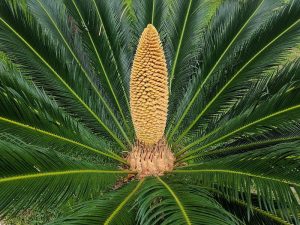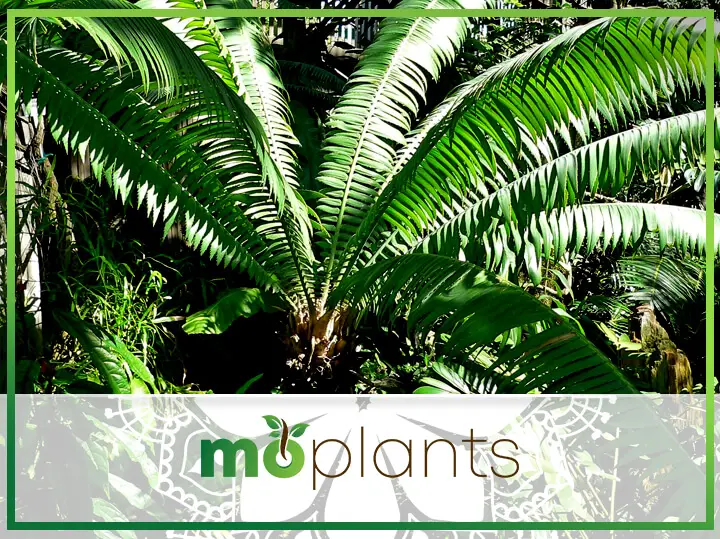They can be found in the fossil record of virtually every continent on earth, changing little in the past 200 million years. They came to prominence in the Mesozoic, a period known as the age of cycads and dinosaurs. Plants known as “the cycads” are true living fossils that make fabulous garden plants. Though they may appear fragile, most prove both beautiful and remarkably resilient.
Cycads bear a visual similarity to ferns and even enjoy the same sheltered locations, but are as tough as desert palms. Cycad foliage may appear soft, but it’s actually quite thick and bears a tough outer cuticle that prevents moisture loss. In hot climates, whether humid or dry, cycads in all their diversity provide the perfect care-free alternative to finicky ferns. Their large lush looks create beautiful backgrounds or single specimens.

A tall Dioon spinulosum and unusual round leaf Zamia furfuracea illustrate the lush looks of cycads in a tropical setting.
Although they look like palms, cycads are more closely related to conifers, a group which includes pine trees. Conifers are mostly needled evergreens that bear their seed in cones. So while a cycad may look like a palm, it reproduces like a pine, with its seed in central cones produced at the very center of the plant. Cycads can be male or female, and each type will produce either a pollen bearing or seed bearing cone.
The male cone of the most commonly grown species, Cycas revoluta, which bears pollen.

The female cone of Cycas revoluta begins as a central pineapple-like form, then once pollinated and red seeds mature the cone splits and a new whorl of foliage appears out the middle.
Cycads are very slow growing plants. This makes them quite expensive to buy. A large specimen can take up to a decade to reach its size, and you pay for those years of care at the grower. Some cycads such as blue leaf Encephalartos lehmannii are rarely grown, and may cost double that of other species because of its scarcity. But for gardens in challenging climates, these problem solvers contribute a unique, lush and exotic character. And their very existence around the world attests to a remarkable ability to survive the rigors of change,

